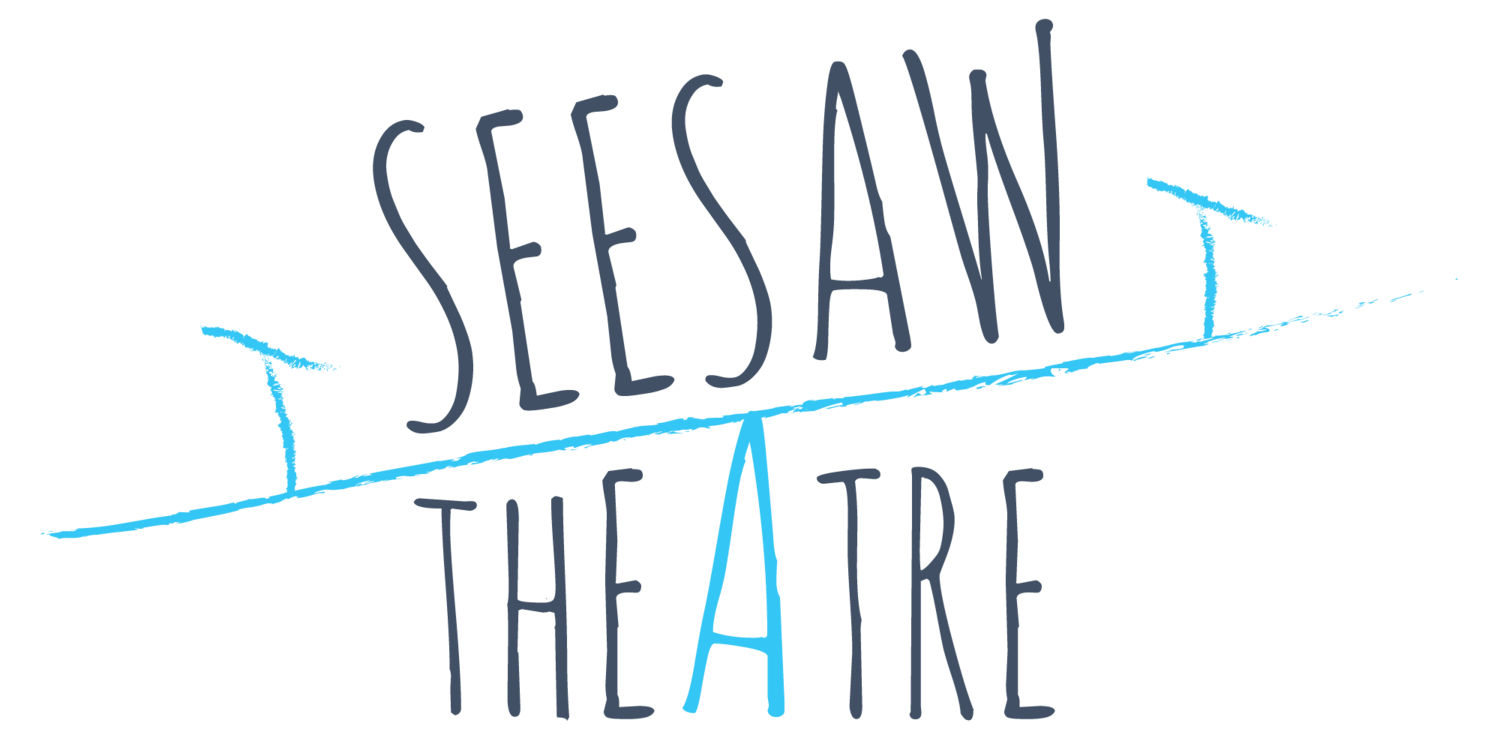Emily Baldwin, Madeleine Rostami, and Rachel Seidenberg at AATE's annual symposium.
The American Alliance for Theatre and Education (AATE) is a national network of artists and educators working to further the field of drama education and theatre for young audiences. This February, AATE’s annual symposium focused on the theme of Best Practices: Accessible and Inclusive Theatre. Organizer Talleri Adkins McRae invited Seesaw to present as part of the weekend’s Resource Roundtable event. Alongside Emily Baldwin (Director of Seesaw’s 2016 production EARTH), who served on the symposium planning committee, Madeleine Rostami (Seesaw Executive Director) and Rachel Seidenberg (Seesaw Artistic Director) flew down to Louisville, Kentucky for a weekend of learning and playing with artists from across the country.
One highlight of the conference was StageOne’s sensory-friendly performance of Hamlet. StageOne, located at The Kentucky Center for the Performing Arts, offers a variety of services, including hearing application receivers, audio description receivers, and ASL interpretation. Before watching their performance, we were fortunate enough to get a behind-the-scenes look at how the sensory-friendly aspects were created. We also learned about StageOne’s collaboration with a performing arts middle school, in which students with developmental disabilities worked alongside teaching artists during four classroom sessions to unpack and prepare the play. Students saw their contributions come to life by being audience members during the sensory-friendly performance. In the Louisville inclusive theatre community, professionals come together to create a cohesive standard for sensory-friendly performances. There is a cross-theatre partnership, in that every theatre uses the same terminology and techniques—such as social stories, tape on the floor to indicate where the audience ends and the stage begins, and touch tours— so that families know exactly what to expect at sensory-friendly performances like StageOne’s Hamlet.
Similar to Louisville’s cross-theatre partnerships, cross-city business partnerships exist as well. The Autism Friendly Business Initiative is part of a city-wide effort to ensure that Louisville is an Autism Friendly Community. However, a community cannot simply declare that they are “autism friendly.” They must also do the work to create accessible and inclusive spaces, which is where the business initiative comes in. According to their website, the program seeks to encourage and train local businesses in Autism Awareness, Acceptance, and Appreciation. This is accomplished through a three-phase training program in which business leaders and their employees learn how to better serve the folks with autism across the city. Cody Clark, a performer on the spectrum, and a coordinator for the Kentucky Autism Training Center taught symposium attendees ways businesses and classes can be truly inclusive. In the spirit of the conference overall, they both emphasised the importance of “honoring lived experience wherever possible,” elevating the voices of those with autism when creating a program, and being willing to develop necessary components as initiatives evolve. Access is not static— communities must remain in continuous dialogue to ensure meaningful change.
We saw this continuous dialogue in action by sitting in for a talkback after The Commonwealth Theatre Center’s Trojan Women production. An ensemble member and the stage manager—both of whom are on the spectrum—and their parents talked about what inclusion looks like at Commonwealth Theatre Center. The two student presenters spoke about how theatre helped to draw out their strengths, or (in their words) their superpowers. They also spoke about how the supportive environment created by the staff and students was meaningful to them. The student who stage managed and did lighting design for the show discussed an especially powerful moment she experienced during the production. Her cues somehow got erased right before the show. Despite this major setback, she was able find a solution with the help of her teacher. Her teacher not only delayed the show to give her time to regroup, but also challenged her to improvise the lighting cues as the show unfolded. We were amazed to learn that the stage manager did just that, effectively saving the show.
We heard even more about the great things young people are accomplishing during a visit to Louisville’s arts magnet elementary school. At the Lincoln School for the Performing Arts, we watched scenes performed by The Braille Readers Theatre, an ensemble of theatre artists who are blind or have low vision. It was particularly exciting to see The Braille Readers and Lincoln students work together through a project in which a Lincoln class of typically-developing fifth graders designed and described costumes for Braille Readers who cannot see. A Seesaw favorite was a description of a wizard’s cloak “that looks like the sound of lightly falling rain.” Designs came alive with multiple senses and textures that enabled both seeing and blind/low vision participants to experience the costumes in new ways. In advocating for access and inclusion in the arts education programming at Lincoln, students reached new heights through collaborative, creative learning. Access is artful, and by including this tenet in the classroom, teachers have the opportunity to unlock new artistic potential in all students.
We are so thankful for the opportunity to attend AATE’s symposium. Throughout the weekend, there was a sense that, as a field, we are on the precipice of major change towards inclusion in the performing arts. We cannot wait to incorporate what we learned at the symposium into our work in Evanston and to continue fostering meaningful arts access.
By Madeleine Rostami and Rachel Seidenberg


